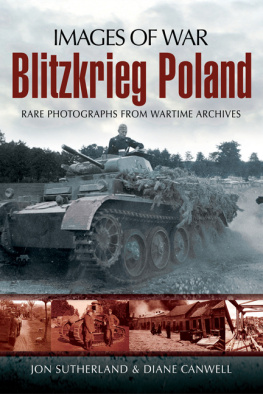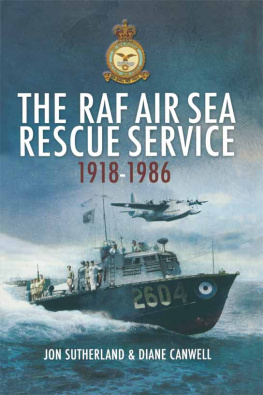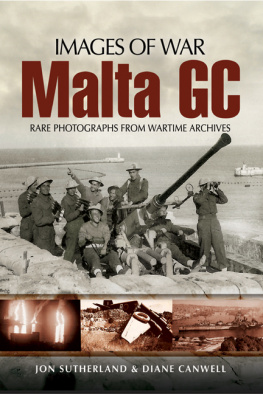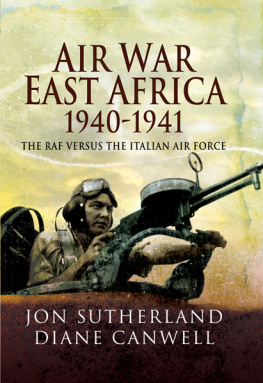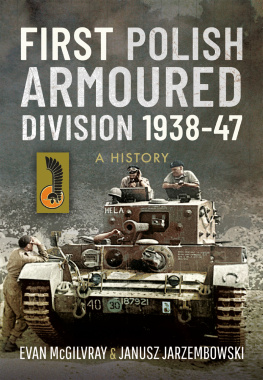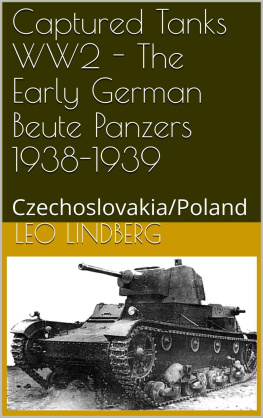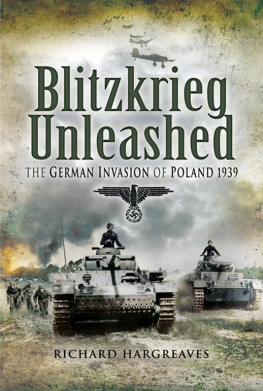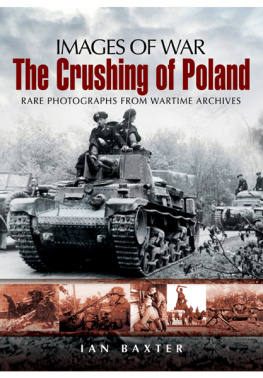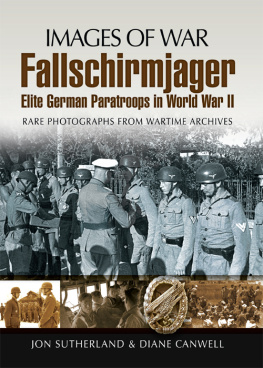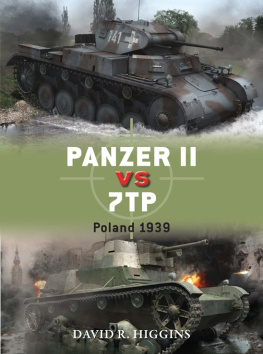

First published in Great Britain in 2010 by
PEN & SWORD MILITARY
an imprint of
Pen & Sword Books Ltd,
47 Church Street,
Barnsley,
South Yorkshire.
S70 2AS
Copyright Jon Sutherland and Diane Canwell, 2010
A CIP record for this book is available from the British Library.
ISBN 978184 884 3356
eISBN 978178 303 8343
The right of Jon Sutherland and Diane Canwell to be identified as Authors of this work has been asserted by them in accordance with the Copyright, designs and Patents Act 1988.
All rights reserved. no part of this book may be reproduced or transmitted in any form or by any means, electronic or mechanical including photocopying, recording or by any information storage and retrieval system, without permission from the Publisher in writing.
Typeset by S L Menzies-Earl
Printed and bound by CPI
Pen & Sword Books Ltd incorporates the Imprints of
Pen & Sword Aviation, Pen & Sword Maritime, Pen & Sword Military,
wharncliffe Local History, Pen & Sword Select, Pen & Sword Military
Classics, Leo Cooper, remember when, Seaforth Publishing and
Frontline Publishing.
For a complete list of Pen & Sword titles please contact
Pen & Sword Books Limited
47 Church Street, Barnsley, South Yorkshire, S70 2AS, England
e-mail: enquiries@pen-and-sword.co.uk
website: www.pen-and-sword.co.uk
Contents
Introduction
T he German Army began a highly secret mobilisation on 26 August 1939. It was to launch Operation White , the invasion of Poland. Full mobilisation would be completed by 3 September. The invasion of Poland, which triggered the Second World War after a series of threats, counter threats and declarations of war, began on 1 September.
The Germans mustered over 1.5 million men in two army groups, amounting to some fifty-three divisions. They attacked Poland from three different directions; Generaloberst Fedor von Bocks 3rd and 4th Armies, known as Army Group North, struck from north-east Germany and east Prussia. Generaloberst Gerd von Rundstedts 8th, 10th and 14th Armies, or Army Group South, invaded from southeastern Germany and northern Slovakia. They were supported by the 1st and 2nd Slovak Divisions. The Germans had mustered thirty-seven infantry divisions, four motorised divisions, six panzer divisions, three mountain divisions and three light divisions.
Ranged against them was the Polish Army of 1.1 million men. Many of these divisions were positioned very close to the German border and found themselves quickly outflanked and out-manoeuvred. In all, the Poles had forty infantry divisions, eleven mounted cavalry brigades and two mechanised divisions.
The Germans had sought an excuse for launching their assault on Poland. One such incident had taken place on 31 August, when German agents, dressed in Polish uniforms, had attacked the German radio station at Gleiwitz, in Upper Silesia. This incident was part of Operation Himmler , to simulate Polish aggression against Germany and thereby give the Germans a reason to launch an invasion of Poland and carry out other reprisals.
The German invasion of Poland was a short but hard fought affair. Polish forces tried to withdraw and set up better lines of defences to the east. On 17 September 1939 an even more decisive hammer blow fell on Poland when Soviet forces invaded from the east. By 6 October the Polish Army had been defeated in the field. Germany annexed Western Poland and the Soviet Union annexed agreed portions of Eastern Poland. The two countries had entered into a secret agreement to partition Poland.
The photographs in this book come from three different photo albums, the first of which appears to be one owned by a German officer of the German Army Medical Corps. Many of the photographs in this collection focus on rear echelon activities and show the wide variety of different vehicles used by the corps. The second album is a little more difficult to identify, but it does contain a number of combat situations and the primary clue as to the nature of the work carried out by the officer are the tactical signs on some of the vehicles used. They appear to suggest that he was attached to a motorised signal company. The final collection is believed to have belonged to a former SS officer. It is possible that he was an army field gendarme, effectively the German military police. This is borne out not only by the uniforms and the equipment, but also the selection of vehicles that are pictured in the album, which includes field cars and Opel Blitz trucks. Some of the men also have equipment for traffic control.
We are indebted to the owner of these albums, James Payne, for his permission to use them in this photographic record of the first campaign of the Second World War.
This was a campaign in which the Germans were first able to use their blitzkrieg techniques against an enemy. For the first time the use of the army and air force in particular was brought together to provide a mutually supporting and devastating strategy against the enemy. Blitzkrieg can be literally translated as lightning war; it would be used to enormous effect by the Germans throughout the Second World War, not only in Poland, but also against the Low Countries, France, the Balkans, Russia and North Africa. The Germans would deploy their air forces to attack on a narrow front whilst paralysing the communications network between the enemys front line and its command. Ground forces, spearheaded by tanks and mechanised infantry, would then punch holes through the enemy defences. Slower-moving units would move up behind to secure the spearheads flanks and to mop up isolated enemy units. The spearheads would thrust on, inflicting devastation in the rear areas of the enemys lines. All the time they would be covered by aircraft. The armoured forces would fan out, isolate enemy units into pockets and launch assaults from the rear. This was a fast-moving, devastating and revolutionary tactic that aimed to ensure a quick and decisive victory. It used the latest military technology and, above all, it avoided the ruinous, static stalemates that had typified the First World War.
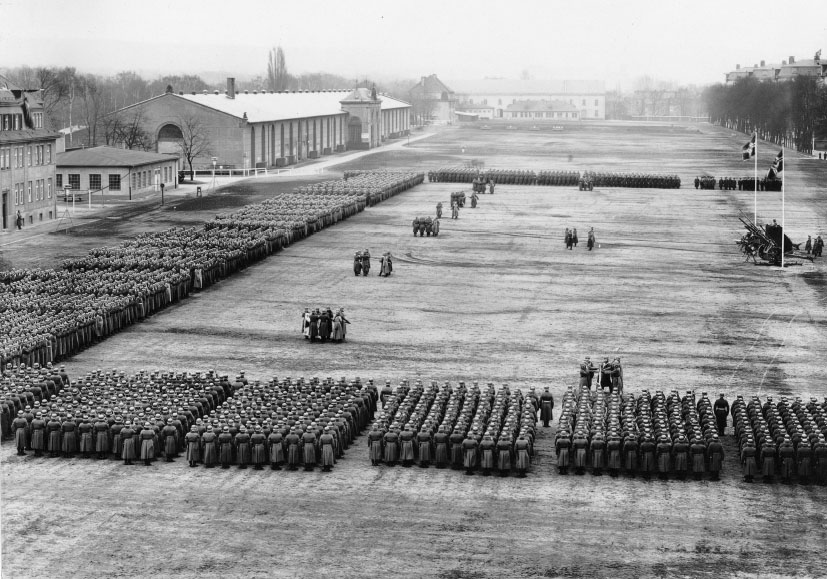
We can assume that this photograph was taken of the parade ground at Insterburg in East Prussia at some point before the invasion of Poland. A number of large barrack complexes had been built in East Prussia by the Germans in the 1930s, although some of the barracks dated back to the late 1890s. East Prussia, although part of Germany, was effectively cut off after the First World War. West Prussia had been restored to Poland and the Memel Territory was annexed by Lithuania. Within East Prussia itself during the 1930s attempts were made to Germanise the region. In 1939, 85 per cent of the 2.49 million inhabitants were ethnic Germans. East Prussia would prove to be a very important jumping-off point for the planned invasion of Poland. It appears from the photograph that the men of the 1st Infantry Division are organised by company and are in full dress uniform.
Chapter One
Signals Collection
T his first, and largest, set of photographs almost certainly belonged to an officer who was part of the Signals Battalion ( Nachrichten Abteilung ) 1, which was part of the German 1st Infantry Division. It had been mobilised as part of the first wave in August 1939. The infantry division had been originally formed in October 1934, at Knigsberg in East Prussia. In 1936 it was transferred to Insterburg and the 1st Infantry Division was part of the XXVI Army Corps, which itself was part of General von Kuchlers 3rd Army and part of von Bocks Army Group North.
Next page
